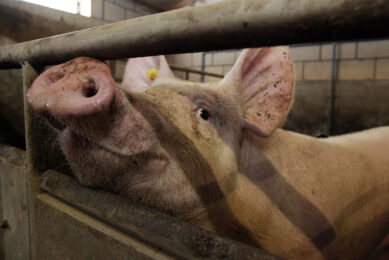OECD: Biofuel demand spurs ag prices

A new international report says increased demand for bio-fuels is causing fundamental changes to agricultural markets that could drive up world prices for many products.
The Agricultural Outlook, published by the Organisation for Economic
Co-operation and Development (OECD) and the United Nations’ Food and Agriculture
Organisation (FAO), covers the next 10 years.
The Agriculture Outlook 2007-2016 says temporary factors such
as droughts in wheat-growing regions and low stocks explain in large measure the
recent hikes in farm commodity prices.
But when the focus turns to the
longer term, structural changes are underway which could well maintain
relatively high nominal prices for many agricultural products over the coming
decade. Reduced crop surpluses and a decline in export subsidies are also
contributing to these long-term changes in markets.
Bio-fuel
demand
But more important is the growing use of cereals, sugar, oilseed
and vegetable oils to produce the fossil fuel substitutes, ethanol and
bio-diesel. This is underpinning crop prices and, indirectly through higher
animal feed costs, also the prices for livestock products.
- In the United
States, annual maize-based ethanol output is expected to double between 2006 and
2016. - In the European Union the amount of oilseeds (mainly rapeseed) used for
bio-fuels is set to grow from just over 10 million tonnes to 21 million tonnes
over the same period. - In Brazil, annual ethanol production is projected to reach
some 44 billion litres by 2016 from around 21 billion today. - Chinese ethanol output is expected to rise to an
annual 3.8 billion litres, a 2 billion-litre increase from current
levels.
Net food importers worry
The report points out
that higher commodity prices are a particular concern for net food importing
countries as well as the urban poor.
And while higher feedstock prices
caused by increased bio-fuel production benefits feedstock producers, it means
extra costs and lower incomes for farmers who need the feedstock to provide
animal feed.
Changing trade patterns
The
Outlook also says trade patterns are changing. Production and consumption of
agricultural products in general will grow faster in the developing countries
than in the developed economies – especially for beef, pork, butter, skimmed
milk powder and sugar.
OECD countries are expected to lose export shares
for nearly all the main farm commodities. Nevertheless, they continue to
dominate exports for wheat, coarse grains and dairy products.
World trade grows
World agricultural trade, measured
by global imports, is expected to grow for all the main commodities covered in
the Outlook, but less rapidly than for non-agricultural trade as import
protection is assumed to continue to limit expansion.
Nevertheless, trade
in beef, pork and whole milk powder is expected grow by more than 50% over the
next 10 years, coarse grains trade by 13% and wheat by 17%. Trade in vegetable
oils is projected to increase by nearly 70%.
Join 26,000+ subscribers
Subscribe to our newsletter to stay updated about all the need-to-know content in the feed sector, three times a week. Beheer
Beheer









 WP Admin
WP Admin  Bewerk bericht
Bewerk bericht